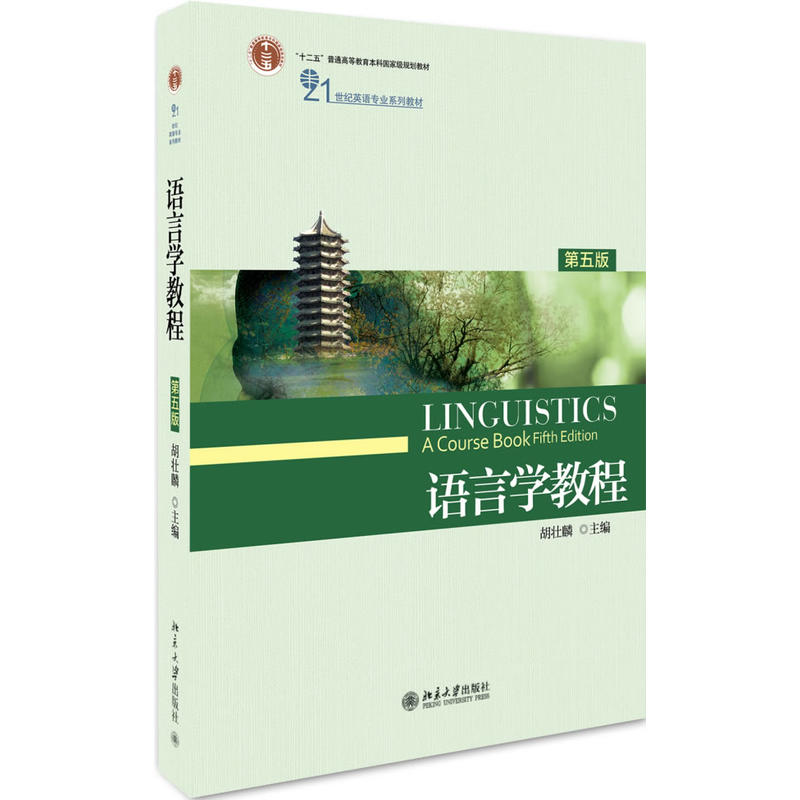- ISBN:9787301281932
- 装帧:暂无
- 册数:暂无
- 重量:暂无
- 开本:32开
- 页数:362
- 出版时间:2017-04-01
- 条形码:9787301281932 ; 978-7-301-28193-2
内容简介
《语言学教程》自1988年首次出版以来,改版四次,印刷八十余次,发行量达二百万册。目前已被国内高等院校普遍作为英语专业本科、硕士语言学方向必修教材以及考研必读教材,并吸引了大量对语言学感兴趣的非英语专业读者。是国内权威的语言学教材,具有较高的社会影响力和教学、科研认可度。此次改版,编辑部事先通过网上信息搜集、访谈等方式,就一线教师和学生对该教材的使用情况进行了调查。后经本书主编、副主编和出版社方面的讨论,一致达成如下修改方案:1. 难度上不做大的变动。2. 全书的总体框架不变,章节不变。3.根据一线教师的需求,一方面在教程中增加一些生动的,贴近生活的例子来解释、说明专业术语和理论;另一方面,内容更新,与时俱进,就近些年来语言学研究的新发展和新热点加以补充和阐释,如将近些年来很热点的认知语言学部分进行扩充等。但从页数考虑,全书增加的内容版面要限制在第四版的10%以内。4.排版时缩小行距,使用英文版式,减少页数。以便定价让学生更能接受。
目录
作者简介
北京大学资深教授、博导,系统功能语言学的代表学者, 清华大学双聘教授、北京师范大学兼职博导。被42所大学聘为兼职教授或客座教授。完成专著 4部,主编7部,合著、合编14 部,译著1部、论文206篇。
-

当代中国政府与政治(新编21世纪公共管理系列教材)
¥31.2¥48.0 -

当代教育心理学(第3版)(本科教材)
¥26.1¥66.0 -

习近平新时代中国特色社会主义思想概论
¥18.2¥26.0 -

新编研究生英语系列教程研究生英语读写教程(提高级)/周红红/新编研究生英语系列教程
¥43.5¥50.0 -

概率论与数理统计
¥23.0¥35.0 -

毛泽东思想和中国特色社会主义理论体系概论(2021年版)
¥9.0¥25.0 -

习近平总书记教育重要论述讲义
¥23.1¥35.0 -

新编大学生军事理论与训练教程
¥13.7¥39.8 -

马克思主义理论研究和建设工程重点教材:管理学(本科教材)
¥27.4¥48.0 -

落洼物语
¥9.4¥28.0 -

言语治疗学·全国中医药行业高等教育“十四五”规划教材
¥49.2¥56.0 -

大学生职业生涯规划与就业指导
¥26.5¥49.0 -

中医骨伤科学·全国中医药行业高等教育“十四五”规划教材
¥62.2¥85.0 -

西方经济学(第二版) (上下)
¥31.6¥90.0 -

组织学与胚胎学实验指导
¥18.1¥28.0 -

毛泽东思想与中国特色社会主义理论体系概论
¥8.5¥25.0 -

粒子输运数值计算方法及其应用
¥46.8¥58.0 -

农业技术经济学
¥46.9¥51.0 -

艺术学概论
¥63.4¥79.0 -

数控编程与仿真实训(第6版)(微课版)(配套实训工单)
¥55.9¥79.8














